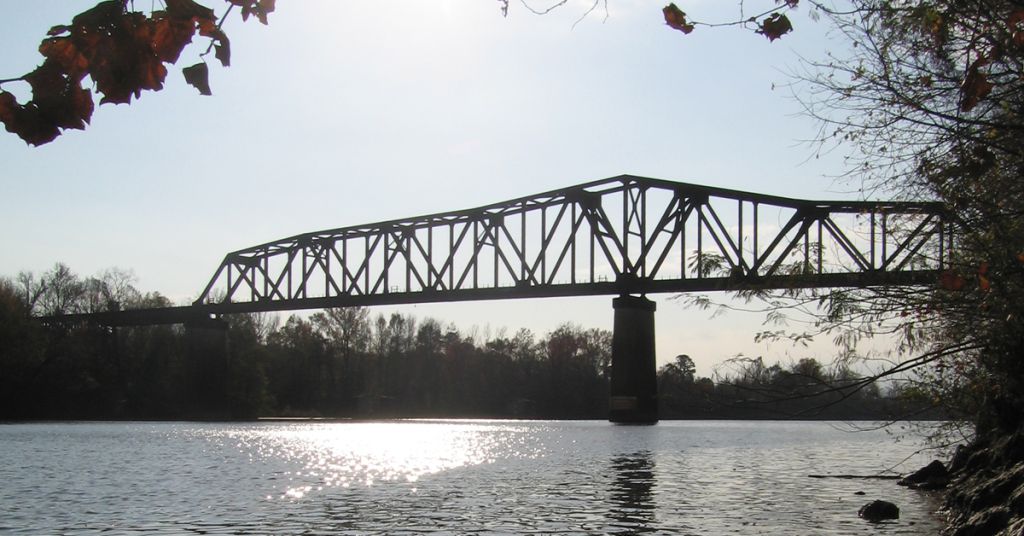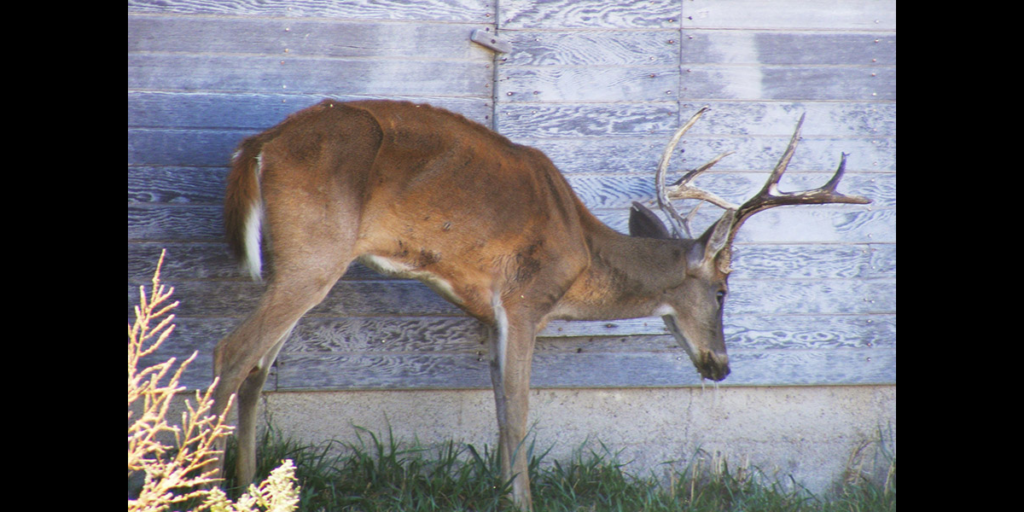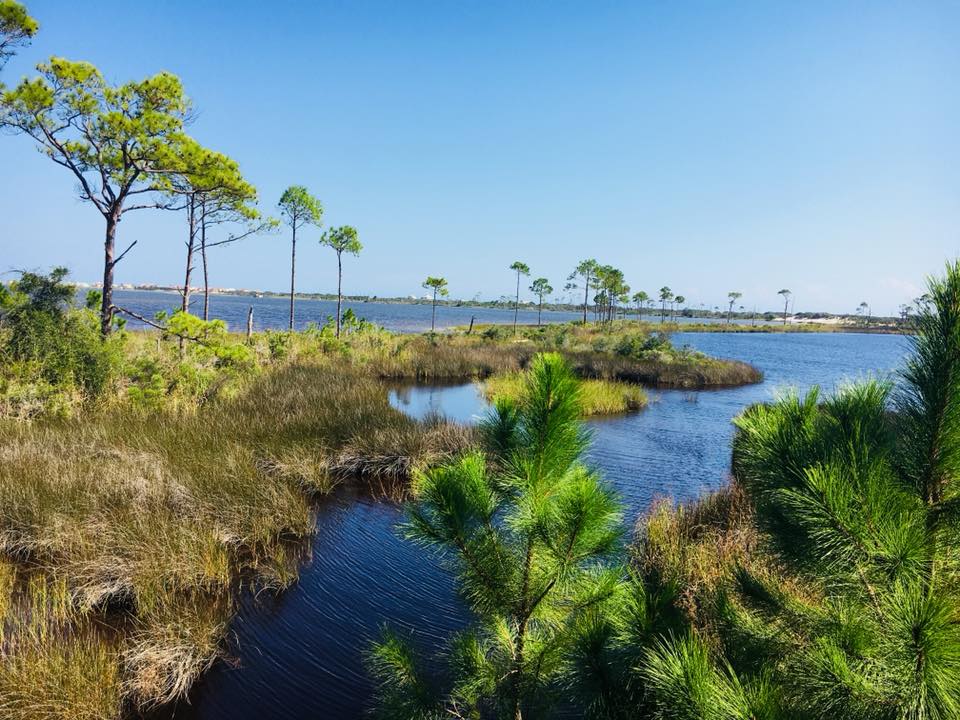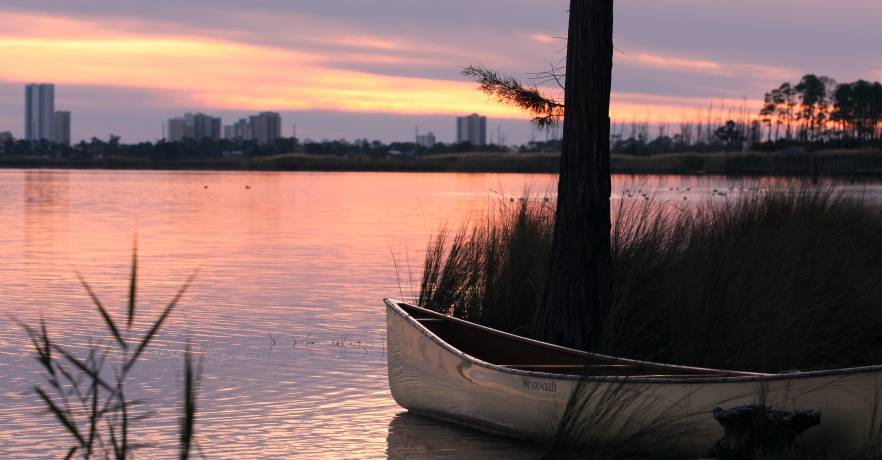Three projects announced for North Alabama funded from Tyson spill lawsuit

Three projects funded by a settlement with Tyson farms will give recreational boaters, paddlers, and fishermen better access to the Mulberry and Sipsey Forks of the Black Warrior River. On Saturday, local leaders visited sites in Colony and Garden City in Cullman County and the Forks in the River site near the Walker County town of Sipsey – and offered details unique to all three projects. The funding comes from a state lawsuit against the Tyson company in the wake of an illegal wastewater discharge at the company’s facility in Hanceville. The spill occurred on June 8, 2019, when a pipe failed at the River Valley Ingredients poultry processing facility in Hanceville, sending tens of thousands of gallons of partially treated wastewater into the river. The spill killed an estimated 175,000 fish and damaged the river’s ecosystem. “These community enhancement projects are the result of the dedicated teamwork of legal staff from the Attorney General’s Consumer Interest Division, and our partners at the Alabama Department of Conservation and the Alabama Department of Environmental Management,” said Attorney General Steve Marshall. “As I said we when announced this settlement last August, this is another example of a Consumer Protection case done well – the money is going exactly where it ought to go – not to the state coffers or outside counsel, but to the impacted areas. It is all the more rewarding to finally see these recreational access projects come to life to benefit the impacted communities.” As part of the settlement of the lawsuit, the AG Marshall created a Restitution Fund Oversight Committee to oversee the projects that are designed to enhance the State’s natural resources, increase recreational opportunities, and benefit the environment and public health in the impacted areas. Alabama Department of Conservation and Natural Resources Deputy Commissioner Ed Poolos will serve as chairman of this committee, which selected the projects. The projects include: • Forks in the River, near Sipsey: Expand parking area and construct a dock, pavilion, and restroom facility. • Town of Colony access: Construct a gravel road and parking area, which will give local residents direct access to the river for the first time. • Garden City Park: Riverfront clean-up with new kayak launch area, add restroom facility, and create hiking trail. “I would like to express my deep appreciation to every member of this committee. They have all worked diligently as a team, to get us to this point. I’m very pleased that we can now announce these three initial sets of projects, with you having our assurance that many more will follow over the coming months,” Poolos stated. “We believe these projects will provide tremendous and long-lasting benefits for Alabama’s citizens impacted by the wastewater spill.”
State officials warn of deer found with Chronic Wasting Disease in NW Alabama

The Florida Fish and Wildlife Conservation Commission announced it recently found Chronic Wasting Disease (CWD) in a hunter harvested deer in northwestern Alabama. This is the first case of CWD detected in Alabama’s deer herd and the first time it has been detected in a state that borders Florida. According to the report, CWD is a brain and central nervous disease that is always fatal to deer; it has not been detected in Florida. The disease causes altered behavior due to microscopic changes made to the brain of affected animals. An animal may carry the disease for years without outward indication. The FWC is asking for people who plan to hunt deer, elk, moose, caribou, or other members of the deer family outside of Florida to be vigilant in helping reduce the risk of CWD spreading into Florida. Chris Blankenship, Commissioner of the Alabama Department of Conservation and Natural Resources (ADCNR), stated, “CWD was first detected in Tennessee and Mississippi in 2018 and has been moving slowly toward Alabama. The Department has implemented multiple proactive regulations to combat the spread into Alabama. Compliance from the public on those measures helped delay the spread into the state for several years.” Additionally, Blankenship encouraged hunters to be aware of the zones they are hunting in so that the disease isn’t spread further. Transporting deer carcasses out of the management zone can potentially spread CWD to currently unaffected areas. There are new rules that took effect July 2021 that prohibit importing or possessing whole carcasses or high-risk parts of all species of the deer family originating from any place outside of Florida. Under the new rules people may only import into Florida: De-boned meat Finished taxidermy mounts Clean hides and antlers Skulls, skull caps, and teeth if all soft tissue has been removed The only exception to this rule is deer harvested from a property in Georgia or Alabama that is bisected by the Florida state line AND under the same ownership may be imported into Florida. Chuck Sykes, Director of ADCNR’s Wildlife and Freshwater Fisheries Division, stated, “The new regulation is intended to increase the opportunities for hunters to supply samples for CWD testing. We need hunters to continue to hunt and submit deer heads for testing. These additional samples will help us better determine the extent of the disease in this area.”
Del Marsh: National Hunting and Fishing Day: Celebrating Alabama’s sportsmen and women

Saturday, September 22 is our nation’s 46th annual National Hunting and Fishing Day. As Co-Chair of the Alabama Legislative Sportsmen’s Caucus and as a member of the 48-state National Assembly of Sportsmen’s Caucuses, I am proud to take time to celebrate the time-honored traditions of hunting and angling. I am also pleased to recognize the historical and ongoing contributions of our state’s original conservationists — sportsmen and sportswomen. Alabama hunters and anglers are the primary source of conservation funding for the Yellowhammer State. Through the purchase of licenses, tags, and by paying self-imposed excise taxes on firearms, ammunition, archery equipment, fishing tackle, motorboat fuel, and other equipment, hunters and anglers drive conservation funding in Alabama and the United States, through the American System of Conservation Funding, a “user pays public benefits” System. Last year alone, this System, combined with hunting and fishing license sales, contributed over $47 million to fund state conservation efforts administered through the Alabama Department of Conservation and Natural Resources (DCNR). All Alabamians benefit from these funds through improved access to public lands, public shooting ranges, improved soil and water quality, habitat restoration, fish and wildlife research, private and public habitat management, hunter education, boat access area construction and many other DCNR projects funded through this System. Hunting and angling are also a significant economic driver for our state. Alabama sportsmen and women spend roughly $2 billion per year on their outdoor pursuits, supporting nearly 40,000 jobs in the state and contributing over $165 million in state and local taxes. Hunting produces countless benefits for our state’s conservation funding and economy, therefore it is important that Alabama sportsmen and women invest time and effort to encourage future participation by the next generation in these time-honored traditions. This effort to increase hunter participation is called recruitment, retention, and reactivation (R3) and over 450 individual R3 programs nationwide have had regional success. R3 programs, as well as many others, need your support and it’s going to take the involvement of every Alabama hunter, regardless of age, to ensure the future of the outdoor pursuits we celebrate on National Hunting and Fishing Day. Our hunting and angling heritage should not be taken for granted, and getting the next generation of Alabama’s sportsmen and women involved in the outdoors will help ensure the conservation of our abundant natural resources for the future. More information on National Hunting and Fishing Day is available at www.NHFDay.org or on the Congressional Sportsmen’s Foundation website at www.congressionalsportsmen.org/policies/state/national-hunting-and-fishing-day ••• Del Marsh, a Republican from Anniston, is the President Pro Tem of the Alabama State Senate.
Alabama red snapper season closes Sunday, 6 weeks early

After its first season of self-managing red snapper fishing, the Alabama Department of Conservation and Natural Resources (ADCNR) is bringing the season to an end six weeks earlier than expected. The Marine Resources Division (MRD) of the ADCNR made the announcement last week that the season to harvest red snapper by private anglers and state-licensed commercial party boats will come to an end on 11:59 p.m. Sunday, July 22, 2018 due to the fact the quota of 984,291 pounds issued under the National Oceanic and Atmospheric Administration’s (NOAA) National Marine Fisheries’ Alabama Recreational Red Snapper Exempted Fishing Permit (EFP) is expected to be met by the closure date. The season was originally scheduled to run through Labor Day, September 3. “Alabama anglers fished extremely hard on the good weather days during the season,” said Marine Resources Director Scott Bannon. “That level of effort, coupled with larger average-sized fish harvested this year as compared to last year, resulted in a daily harvest rate two times higher than 2017, which prompted an earlier than anticipated closure. “The purpose of the EFP was to demonstrate Alabama’s ability to establish a season and monitor landings within a fixed quota and I think we have shown we can do that,” said Bannon. The state-managed season was made possible through language authored by U.S. Senator Richard Shelby in the FY2017 Commerce, Justice, and Science Appropriations bill that directed the NOAA Fisheries to develop the fishery management pilot program allowing states to direct reef fish management activities. Anglers are reminded of the following: Possession of red snapper in Alabama waters while state waters are closed is prohibited regardless of where the fish were harvested. Alabama anglers may fish in federal waters off the coast of Alabama (outside of 9 nm) and land in a state that is open to the landing of red snapper, but they must adhere to the open state’s rules and not transit in Alabama state waters with red snapper on board. The season for federally-permitted charter for-hire vessels will close at 12:01 a.m. July 22. In-season landings estimates were calculated through the use of Snapper Check, the program established in 2014 to collect mandatory trip reports from anglers, and this monitoring tool was a key component of the EFP. MRD staff will review the complete 2018 season effort and landings data to develop a plan for the 2019 season. Summary data from the season and information about the EFP can been found online here.
Alabama submits request to NOAA to manage Red Snapper seasons

Recreational fishermen across the Gulf of Mexico and the East Coast, rejoice — the days of federal mismanagement of red snapper fishing may soon be over. The Alabama Department of Conservation and Natural Resources on Wednesday announced the Gulf States — Florida, Alabama, Mississippi, Louisiana and Texas — have banded together to submit proposals for an alternative style of red snapper management for private and state charter vessel anglers during 2018 and 2019. If approved by NOAA Fisheries, each state would have the ability to establish fishing season start and end dates in federal waters off their respective state’s coast. Under the proposals, each state has requested a portion of the total allowable catch for private recreational anglers in the Gulf and they would each be responsible for monitoring landings so they do not exceed their portion. Alabama will use Snapper Check to monitor its landings and determine if: the season will close as anticipated; the season will close earlier than anticipated due to daily landings exceeding forecasted totals; or the original season length should be increased if daily landings do not meet anticipated levels (i.e. due to smaller fish size or inclement weather). Alabama’s proposal has state and federal waters opening for weekends only (Friday–Sunday) from June 1 through September 3 (Labor Day). The season would also include the entire week of Independence Day, June 30- July 8. These specific proposals are referred to as Exempted Fishing Permits. They will be reviewed by NOAA Fisheries and state representatives on Wednesday, Jan. 31 during the Gulf of Mexico Fishery Management Council meeting in New Orleans. Alabama State Auditor Jim Zeigler belives the new proposal is better than last year’s. “While we are not quite there yet, this plan is light years better than the short seasons we suffered. My ultimate goal is to end federal regulation and allow Alabama to regulate our own fisheries,” said Zeigler, an angler himself, living in Mobile, Ala. The season for anglers planning on fishing from a federally-permitted charter vessel this year will begin June 1 and end sometime in late July. The season will be announced by NOAA Fisheries in the coming months.
Kay Ivey announces $33 million for Ala. restoration and conservation projects

Governor Kay Ivey on Tuesday announced the National Fish and Wildlife Foundation (NFWF) has approved more than $33.5 million for five new projects and amendments to two existing projects that focus on the restoration and conservation of Alabama’s natural resources. “The harm caused by the 2010 Deepwater Horizon oil spill remains ever-present in our minds today,” Ivey said. “This additional $33 million in funding for Alabama from the National Fish and Wildlife Foundation will further strengthen our long-term recovery efforts along the Gulf Coast. The commitment of our local, state, and federal partners to ensure the long-term sustainability of our coastal areas is greatly appreciated.” In 2013, a U.S. District Court approved two plea agreements resulting from the criminal charges against BP and Transocean as responsible parties to the Deepwater Horizon oil spill. The settlement directs a total of $2.54 billion to NFWF to establish a Gulf Environmental Benefit Fund (GEBF) over a five-year period to support ecological projects in all five Gulf States. A total of $356 million will be paid into the GEBF for conservation projects dedicated to the State of Alabama. Alabama 2017 projects Bon Secour National Wildlife Refuge Acquisition: $5.9 million This project proposes the acquisition of a 251-acre property identified by the U.S. Fish and Wildlife Service (USFWS) as among its highest priorities in the state of Alabama. The parcel will be deeded to the USFWS for inclusion and management within Bon Secour National Wildlife Refuge (BSNWR). The property represents an important priority area within the authorized acquisition boundary of the Refuge and includes scrub/shrub, pine flatwood, saltwater marsh, and tidal creek habitats, with permanent and semi-permanent wetlands scattered across the parcel. Dauphin Island Bird Habitat Acquisition and Enhancement Program: $4.5 million This project will enhance coastal bird habitat along one mile of recently restored beach that is immediately adjacent to a 200 acre bird sanctuary on Dauphin Island. The project will include sand fencing, dune plantings, signage, stewardship, and, if necessary, additional sand placement. Additionally, funding is included to acquire and enhance important bird habitats on Dauphin Island to benefit shorebirds, wading birds and seasonal migrants. Due diligence and landowner outreach will be undertaken as the first step to acquire an estimated 13 acres of undeveloped habitat to protect critically important migratory stopover habitat and facilitate management of contiguous blocks of conservation lands. Lands acquired through this project will be deeded to and managed by the Dauphin Island Bird Sanctuary (DIBS). DIBS will also undertake prescribed fire and invasive species management to enhance the ecological value of these newly-protected habitats. Little Dauphin Island Restoration Assessment: $1.4 million This project will provide funding to study both nearshore and onshore restoration options for a future project to enhance and protect Little Dauphin Island. Included in the Bon Secour National Wildlife Refuge managed by the U.S. Fish and Wildlife Service, Little Dauphin Island is an important nesting and foraging area for several coastal bird species, including several imperiled shorebird species. Mobile Bay Shore Habitat Conservation and Acquisition Initiative – Phase II: $6.9 million Phase II of the Mobile Bay Shore Habitat Conservation and Acquisition Initiative will acquire, restore and preserve intact high‐priority, undeveloped properties within three specific areas of the City of Mobile. These three priority intertidal habitat areas include riparian, wetland and upland habitats that are used by a variety of fish and wildlife species injured by the Deepwater Horizon oil spill. Salt Aire Shoreline Restoration: $12.7 million This project leverages the earlier acquisition of the 233-acre Salt Aire property (2015 GEBF) and proposes protection of degraded shoreline and restoration of 30 acres of associated coastal marsh on the western shore of Mobile Bay. Construction of wave attenuation structures and the beneficial use of dredge material for marsh creation are both envisioned. The 2015 GEBF award funded both the acquisition of the property and engineering and design of the requested restoration work. “Today’s announcement brings the total amount of NFWF GEBF-funded projects in the State of Alabama to $148 million, and it represents the culmination of close to a year-long process of coordinating with our local partners to identify those projects which will significantly enhance and restore our natural resources into the future,” Alabama Department of Conservation and Natural Resources Commissioner Chris Blankenship said. “We appreciate the hard work of all involved to bring these projects to fruition.” Additional information on each project will soon be available online.
Bradley Byrne: A red snapper victory

We recently had a major victory for our area’s Red Snapper fishermen and the coastal communities, which benefit from a longer Red Snapper season. Last Wednesday, the federal Department of Commerce announced an emergency extension of the 2017 Red Snapper season for recreational fishermen. As you probably remember, it was announced by the National Oceanic and Atmospheric Administration earlier this year that the Red Snapper season would be just three days, the shortest season ever. Under the emergency extension, the season for recreational fishermen now includes Fridays, Saturdays, and Sundays between now and Labor Day. The season will also include July 3rd and 4th and Labor Day. This adds up to an overall extension of 39 days. As soon as the three day season was announced, my staff and I went to work to on an extension. We partnered with other Gulf Coast congressmen in sending a letter to the Department of Commerce requesting an extension, and then worked with the Department and the Gulf states to iron out the details. Many people helped make this extension possible, and they deserve to be acknowledged. I appreciate President Donald Trump and Commerce Secretary Wilbur Ross for paying attention to our concerns and working to address this issue. The staff at the Department of Commerce was easy to work with as we put this extension together. I also cannot say enough about the help from Chris Blankenship, the acting commissioner of the Alabama Department of Conservation and Natural Resources. Chris has always been a joy to work with on Red Snapper issues, and he played a critical role in helping get the other Gulf states on board with this agreement. I also want to thank the local and state officials, as well as the grassroots supporters and fishermen, who helped bring attention to this issue. I firmly believe your efforts made a difference. One of the other people who played a critical role in making this agreement a reality was House Majority Whip Steve Scalise from Louisiana. Congressman Scalise expected to make news on Wednesday morning talking about the Red Snapper news, but he unfortunately made national headlines for a different reason. He was one of the individuals tragically shot during a practice for the Congressional Baseball Game. Steve Scalise is a wonderful man, a personal friend, and a true advocate for the Gulf Coast. I hope you will join me in continuing to pray for Steve and his family as he goes through the recovery process. Ultimately, it was a total team effort to make this emergency extension a reality. This is a real victory for all our recreational fishermen as well as our coastal communities. All this said, the extension only applies to the 2017 season. We must continue our efforts to find a permanent legislative solution that gives more authority over setting Red Snapper seasons to the five Gulf states. Discussions are ongoing between my office and other Gulf Coast congressmen in the House on legislation to address the issue, but we also need a willing partner in the Senate to help push our Red Snapper reforms in that body. As I have said before, I am not giving up on this issue until we get a solution. Not only is it critically important to our fishermen and the economies in our coastal communities, but it is also a shining example of the kind of government overreach and incompetence that has become all too common in today’s federal government. I encourage all our fishermen to enjoy the extended 2017 Red Snapper season, but to join me in not letting up the pressure as we work toward a permanent solution. • • • Bradley Byrne is a member of U.S. Congress representing Alabama’s 1st Congressional District.
Richard Shelby praises NOAA announcement of red snapper assessment

Last month Alabama wildlife officials came out saying the federal government is still overestimating the amount of red snapper caught in the Gulf of Mexico. According to a report from the Alabama Department of Conservation and Natural Resources, the federal government is “significantly overestimating” the harvest of red snapper by fishermen in Alabama. In 2016, Alabama Wildlife Officials projected 1.5 million pounds of red snapper were caught between charter boats and recreational fishermen, whereas the government said 2.7 million pounds of snapper were landed in Alabama the same year. Thus, the annual catch season was limited to only nine days in July, dramatically impacting fishermen. On Tuesday, the National Oceanic and Atmospheric Administration (NOAA) announced it is providing $9.5 million for an independent and external assessment to determine which figures are accurate and the total abundance of red snapper in the Gulf of Mexico. Alabama’s senior U.S. Senator Richard Shelby, Chairman of the Senate Appropriations Subcommittee on Commerce, Justice, Science and Related Agencies (CJS), calls the announcement a “critical step” toward fishing reform. “Today’s announcement by NOAA is a critical step towards much-needed reform to the way fish are counted in the Gulf of Mexico,” said Shelby. “These efforts will help ensure that NOAA counts red snapper where they actually live – on reefs.” In the fiscal year 2016 CJS Appropriations bill, Shelby included both funding and guidance for an assessment of red snapper Gulf-wide. This evaluation includes an examination of the population of red snapper on reefs and the new technologies available to more accurately count the fish. Results from this independent study will be compared to NOAA’s internal estimates and will be used in future Gulf fisheries management decisions. “I’m pleased that this assessment will provide an independent check on NOAA’s internal counts for red snapper in the Gulf, which is long overdue,” added Shelby. “My goal has always been, and will continue to be, to get our Gulf fishermen more days out on the water.” Fishing for red snapper: B-Roll: Red Snapper – Gulf of Mexico, Recreational Fishing from NOAA Fisheries on Vimeo.
Judge: Ex-official lacks standing to proceed with lawsuit against Gulf State Park

A judge has ruled that the former commissioner of the Alabama Department of Conservation and Natural Resources doesn’t have standing to continue his lawsuit against Gov. Robert Bentley and others over funding for a new hotel and upgrades at Gulf State Park. Montgomery County Circuit Judge Truman Hobbs issued the ruling Tuesday, saying Charles Grimsley lacks standing to proceed with the lawsuit because the funds came from BP, and not taxpayers. Grimsley’s lawsuit alleges that the BP funds for the project are not authorized to be used for the work under the 2013 legislation that initiated the project. Grimsley tells Al.com that he’s discussing his next move with his attorneys. Bentley says the 350-room lodge, trails and other improvements at Gulf State Park will be an asset for Alabama. Republished with permission of the Associated Press.


